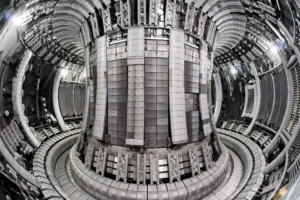Chemical nickel plating in the nuclear industry is a crucial process involving the application of a nickel layer to components used in nuclear reactors and other nuclear infrastructure. This coating offers several advantages, including corrosion resistance, high thermal and electrical conductivity, and compatibility with high temperature and reactive environments. Nickel plating is used to protect structures from oxidation and corrosion caused by the extreme conditions inside nuclear reactors, thus helping to ensure the safety and reliability of nuclear facilities
.
How is nickel plating applied in the nuclear industry?
In the nuclear industry, chemical nickel plating is mainly used to protect critical components from the damaging effects of the extreme conditions found inside nuclear reactors. These components can be exposed to high temperatures, corrosion from high temperature water, and aggressive chemicals in the cooling circuit. Nickel plating provides a protective barrier against corrosion and oxidation, thus extending the service life of components and ensuring the safety and reliability of nuclear facilities. In addition, chemical nickel plating can be used to improve the mechanical strength and thermal conductivity of components, helping to maintain optimal reactor performance.
What advantages does the use of nickel plating bring to the nuclear industry?
The use of nickel plating in the nuclear industry brings several significant advantages:
Corrosion protection:
Nickel plating provides a protective barrier against corrosion, which is especially critical in nuclear reactors due to extreme conditions, such as high temperatures and high pressure, that can accelerate the corrosion process.
Resistance to high temperatures:
Nickel is known for its resistance to high temperatures, making it ideal for use in nuclear environments where temperatures can be high. Nickel plating thus helps maintain the structural integrity of components even under extreme thermal conditions.
Compatibility with highly responsive environments:
Nuclear reactors can contain aggressive chemicals in their cooling circuit. Nickel plating offers effective protection against these agents, ensuring the durability of components in highly reactive environments.
Thermal and electrical conductivity:
Nickel is a good thermal and electrical conductor. By applying a layer of nickel to components, their thermal and electrical conductivity can be improved, thus contributing to the proper functioning of cooling and control systems.
Extension of component life:
By protecting critical components from corrosion and high temperatures, nickel plating helps extend their life, reducing the need for frequent replacement and the costs associated with maintenance.
Safety and reliability of nuclear facilities:
Ensuring the structural integrity of nuclear components is critical to the safety and reliability of nuclear facilities as a whole. Nickel plating contributes to this goal by protecting critical components from adverse environmental conditions.
Overall, the use of nickel plating in the nuclear industry offers a combination of corrosion protection, high temperature resistance, compatibility with highly reactive environments, improved thermal and electrical properties, and extended component life, thus contributing to the safety and reliability of nuclear facilities.
How much nickel plating will be used in the nuclear industry in the future?
In the future, the use of nickel plating in the nuclear industry is likely to continue to be essential and may even increase. With the constant development and innovation in nuclear technology, nuclear reactors are expected to become more efficient and advanced. As a result, there will be an increased demand for coating materials and techniques that can ensure the protection and reliability of critical components in reactors.
Nickel plating offers a unique combination of corrosion resistance, high temperature resistance, and compatibility with highly reactive environments, making it an ideal choice for components used in the nuclear industry. In addition, continued improvements in nickel plating technology could lead to more efficient and environmentally friendly processes, thus meeting the growing needs for sustainability in the nuclear industry.
In summary, in the future, nickel plating is likely to retain its relevance in the nuclear industry and may be even more widely used to ensure the safety, reliability, and efficiency of nuclear infrastructure.

